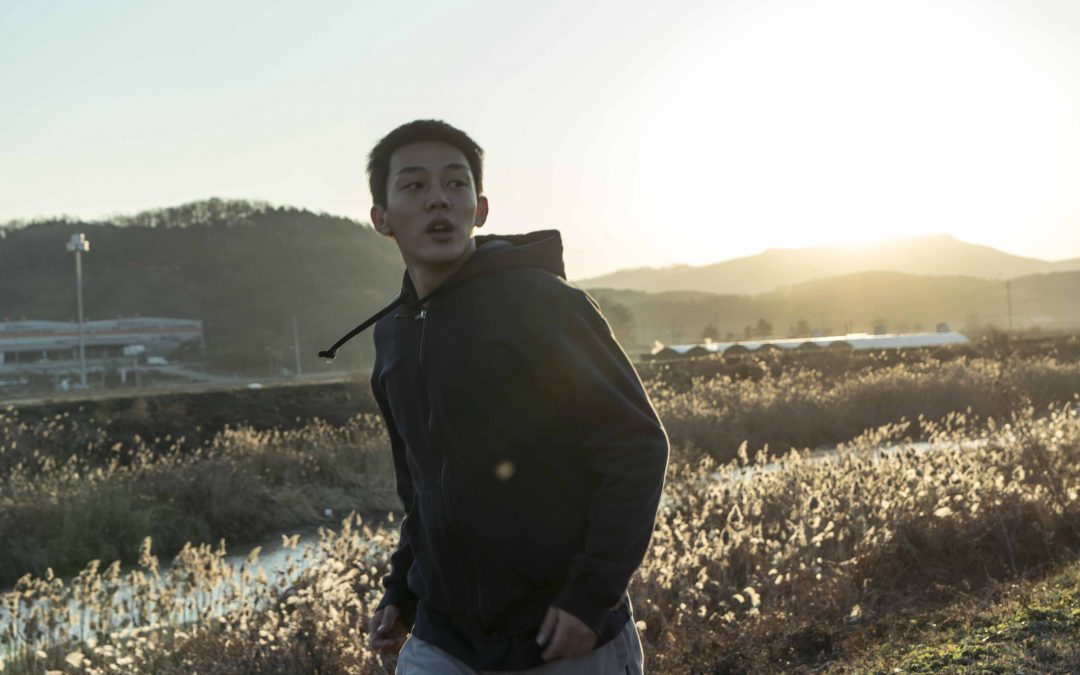In This Section
- Home
- About Us
- Study with Us
- FMT Doctoral Studies
- Research
- CARPE
- Collaborations
- EDI
- People
- Film
- Music
- Theatre
Blog. Burning Film Coverage.

On Tuesday, I saw the Irish premiere of Chang-dong Lee’s film Burning...
... at the Cork International Film Festival. According to the film’s introduction, its filmmaking received the best reviews at the Cannes Film Festival in the last 20 years, and several members of the Korean embassy attended the screening at the Gate Cinema in order to celebrate. The narrative is based on a Haruki Murakami short story called “Barn Burning,” which, in turn, is based on a William Faulkner story of the same name. Using my knowledge of Murakami’s other work, I sensed that Burning would be complex and thought-provoking.
Burning’s vague, simple title alludes to a theme that is present both literally and figuratively throughout the film. The act of burning itself is ever-present in the film—from Lee Jong-su’s (Ah-In Yoo) memories of burning his mother’s clothing, to his trip to the museum in which he stares at photos of the Korean War, to Ben’s (Steven Yeun) unusual hobby. Haemi (Jong-seo Jeon) also personifies a burning, aimless energy which is manifested most clearly in her fascination with the concept of “Great Hunger,” or a desire to understand the meaning of life. Even the pacing of the film is a slow, constant burn beautifully contrasted by the blues and grays of the chilly Korean atmosphere.
The film certainly stresses this contrast between dark and light, and its cinematography even lingers on the wall of Haemi’s studio apartment as a sliver of sun shines in one spot and then slowly dissipates. In fact, we watch the world slowly grow dark at several points in this film, including Jong-su’s love scene with Haemi, his conversation with Ben about the latter’s strange hobby, and his moment of contemplation as he sits alone in Haemi’s room.
The magical, often uneasy nature of twilight is exacerbated by the near-absurd conversations and actions of the actors, as well as the constant sound of North Korean propaganda that emanates across the border. These audiovisual subtleties maintain the film’s tone of social chaos and give the audience insight into Jong-su’s anxious psyche as tries desperately to take control of the world unravelling around him. Given these details along with Jong-su’s hallucinations and the narrative’s intentional inconsistencies, the audience is left to question the sanity—and therefore the reliability—of the protagonist.
Burning’s impressive sound design was especially evident during the beautifully-framed shots of Haemi dancing. During the bittersweet, humorous scene of her dancing in the restaurant, the sound of Ben’s friends clapping slowly drops out until only Haemi’s progressively off-beat stomps can be heard. Later, when Haemi dances again in Jong-su’s front yard, the jazz music ends just as Haemi becomes self-conscious and depressed, and when the film finally falls silent Haemi coughs and walks out of the frame, pulling the audience from fantasy into reality.
All in all, Burning is about coming of age in a volatile socio-political environment, and touches upon the difficulty and unreliability of emotionally-charged memory. This theme is so present that the concept of memory itself seems to be its own character in the film. Burning is an intellectually and emotionally challenging film complemented by stunning visuals, and it was a privilege to attend its Irish premiere months ahead of its American premiere.
